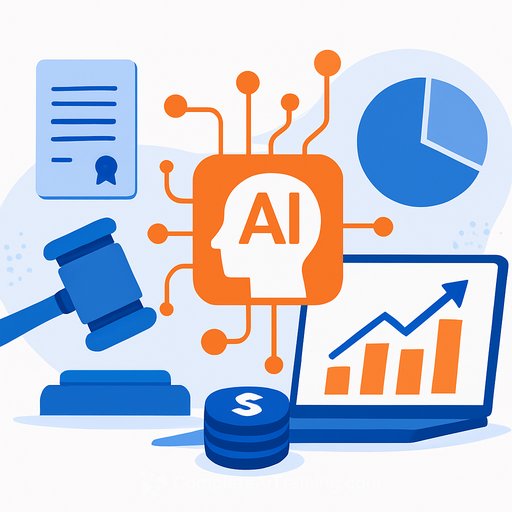Tips for Legally Promoting Artificial Intelligence
AI sells fast. Legal risk lands faster. If you advise a product team or review campaigns, your job is to keep claims tight, disclosures clear, and evidence on file. Here's a practical playbook you can apply before the ad spend goes live.
1) Substantiate every claim, including the flashy ones
Marketing needs a reasonable basis for each statement. "Human-level," "bias-free," "100% accurate," and "secure by default" need proof that matches the breadth of the claim.
Keep a claim matrix: the exact words used, the underlying tests, dates, methods, and who ran them. If the claim changes, update the file.
2) State what the AI does-and what it doesn't
Set expectations. Clarify data domains, known limits, and failure modes. Avoid absolute statements; qualify with conditions tied to your evidence.
If outputs may require human review, say so. If results vary by data quality, say that too.
3) Use endorsements and reviews the right way
Disclose any material connections with influencers. Don't script "independent" opinions or cherry-pick results without context. No fake reviews. No suppression of negative feedback.
Make sure endorsements match typical results or include clear qualifiers. See the FTC's guidance on endorsements and influencers for practical examples: FTC Endorsement Guides.
4) Treat data privacy as part of the marketing plan
Confirm lawful basis before using personal data for case studies, training, or retargeting. Respect region-specific requirements (consent, opt-outs, DPIAs, DSR handling).
Don't imply data is anonymized unless it meets legal standards. If models were trained on customer data, disclose at a level consistent with your privacy notice and contracts.
5) Don't borrow credibility you don't have
No claims of "approved," "certified," or "endorsed" by a regulator unless you have the actual authorization. Avoid logos and seals unless licensed.
Be careful with compliance statements. For EU messaging, align with the AI Act classification and obligations you actually meet. The Commission's page offers a useful overview: EU AI Act overview.
6) Respect IP in demos, datasets, and outputs
Get rights to training materials, sample prompts, and demo assets. Honor open-source licenses and attribution. Don't scrub license notices.
If outputs may include third-party content or styles, address the risk in your materials and terms. Avoid claims that imply exclusive ownership where law is unsettled.
7) Be precise about security
Security claims should reflect deployed controls, not the wishlist. If you mention encryption, specify scope (in transit, at rest) and any exclusions.
Don't overstate red-team results. Provide context, dates, and limits of testing. Avoid guarantees.
8) Watch sector-specific rules
Healthcare, finance, employment, and education have their own triggers. Marketing that implies diagnostic, investment, or hiring decisions demands extra scrutiny.
If a model informs high-stakes outcomes, align your messaging with applicable laws and your actual safeguards, human oversight, and documentation.
9) Build a claim lifecycle
Set up pre-clearance for ads, landing pages, sales decks, and webinars. Version claims as the model, data, or risk controls change.
Expire claims that rely on old benchmarks. Re-test on a set cadence and refresh disclosures accordingly.
10) Bias and fairness: show your work
If you discuss fairness, publish the metrics you tested, datasets used, and known gaps. Avoid blanket "no bias" statements.
Prefer comparative, scoped claims tied to documented test conditions. Provide contact points for researcher feedback and bug bounties where appropriate.
11) Governance that marketers will actually use
Create short, reusable checklists for product marketers, sales engineers, and PR. Store substantiation and approvals in one place. Educate teams on off-label claims in sales calls and webinars.
Monitor affiliates and resellers. Your liability can extend to their statements.
Quick checklist before launch
- Exact claim language mapped to evidence and dates
- Clear qualifiers and limitations (scope, data, variability)
- Privacy review: lawful basis, notices, opt-outs, DSR plan
- IP clearance for training data, demos, and assets
- Endorsement and review disclosures, influencer controls
- Sector rules checked; no implied approvals
- Security claims tied to deployed controls, not aspirations
- Bias/fairness metrics published or available on request
- Affiliate and reseller messaging aligned
- Re-test schedule and claim expiry dates set
Where training helps
If your team needs a practical baseline on AI tools and risk-aware promotion, these resources can help:
- AI courses by job role for targeted upskilling across legal, marketing, and product.
- Popular AI certifications to standardize internal expectations for claims and controls.
Bottom line: precision beats hype. Make claims you can defend, disclosures people can understand, and records you can produce. That's how you promote AI without creating your next investigation.
Your membership also unlocks:






